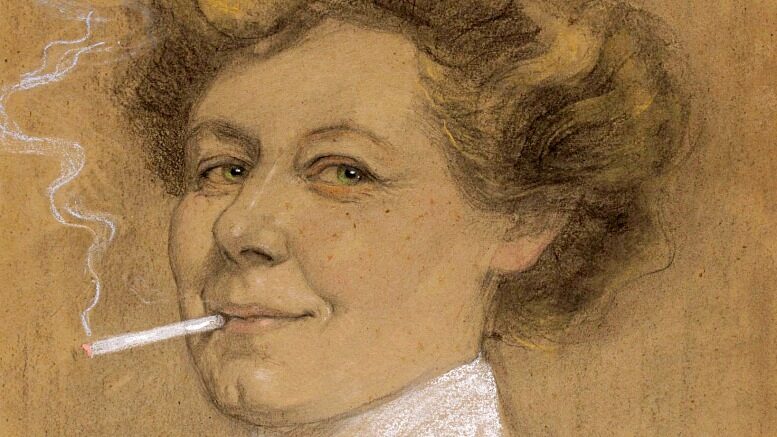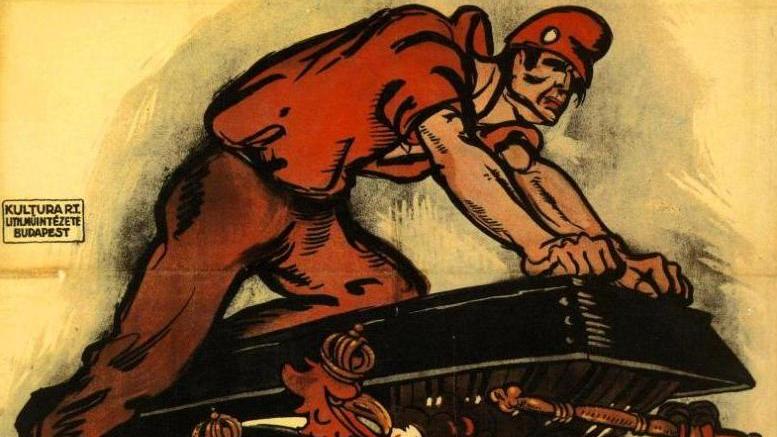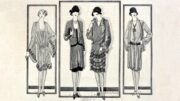In Austria and also throughout the world, Stephanie Glax was one of the first female poster designers. Indeed, quite generally in society, she refused to allow herself to be pushed into the confined image of women that prevailed at the time.[1] This conviction was not just noticeable in the field of art, but also pervaded a remarkably large range of other areas. One portrait depicted Glax as a self-confident cigarette smoker, and she was an accomplished swimmer who also took part in competitions, for instance. And in March 1899 when the “Verein der Studentinnen der Universität Wien” (Association of Female Students at Vienna University) held its first carnival party in Vienna’s Etablissement Ronacher, the “Neue Freie Presse” reported: “The dancers were given a card illustrated by Miss Stephanie Glax, a student at the Kunstgewerbeschule des Oesterreichischen Museums, which displayed a frater in studio with a glass of champagne, and a female student holding a beer tankard.”[2] Such an ironic gender role reversal was typical of this young artist, who never grew weary of conquering territory previously dominated by men.
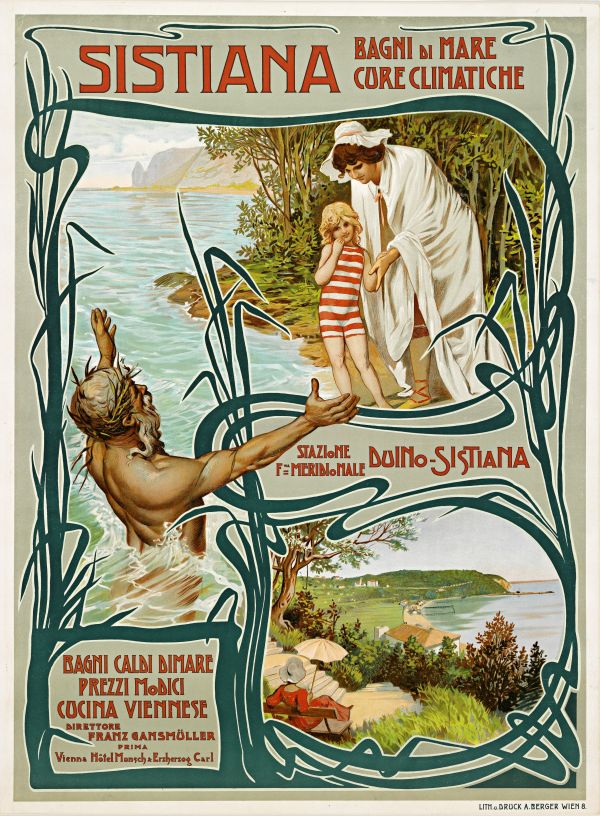
Stephanie Glax, poster, 1900 (Wien Museum)
Stephanie Glax was born on 3 July 1876 in Rohitsch-Sauerbrunn, which at the time was part of Lower Styria in Austria and now belongs to Slovenia, called Rogaška Slatina. This small yet well-known spa town provided her father, Dr Julius Glax, with a wealth of opportunities. From 1885 onwards, the family spent the winter months in Abbazia/Opatija – which is now in Croatia – and later moved there permanently. Situated in the Upper Adriatic, it was Julius Glax’s intention to turn it into a spa town of international renown. He was actively supported in his efforts by the illustrations created by his talented daughter.
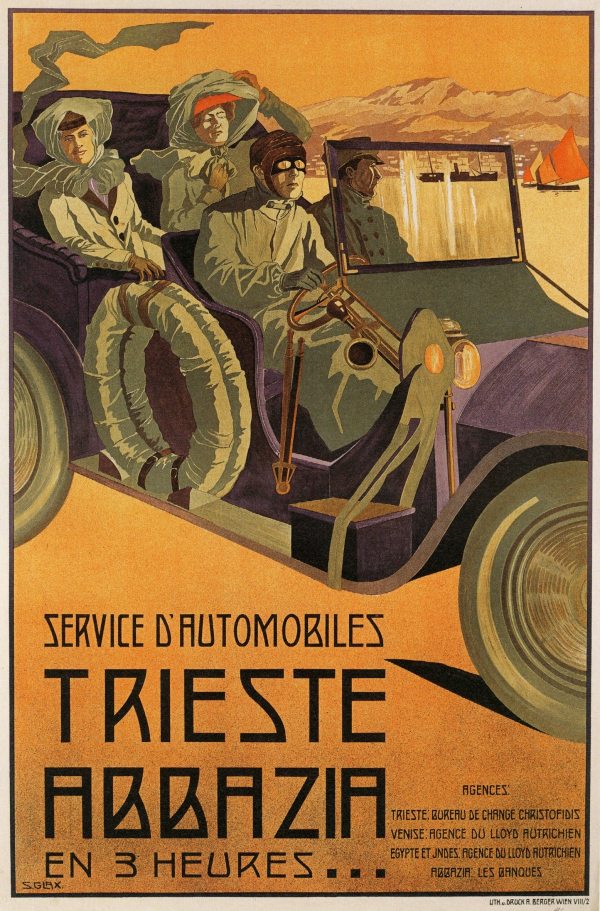
Stephanie Glax, poster, 1911 (Wien Museum)
Stephanie Glax studied with Franz Matsch and Felician von Myrbach at the Kunstgewerbeschule in Vienna from 1896 to 1900, and then spent time studying in Munich and Paris. Due to her international experience, Glax was obviously well acquainted with contemporary artistic trends and became an important representative of Jugendstil in Austria-Hungary. She successfully experimented with the new printing technique known as algography, for example, which allowed the heavy lithography stones to be replaced with aluminium plates. As a member of the “Vereinigung der Bildenden Künstlerinnen Österreichs”, Glax was also very active in the women’s art movement.
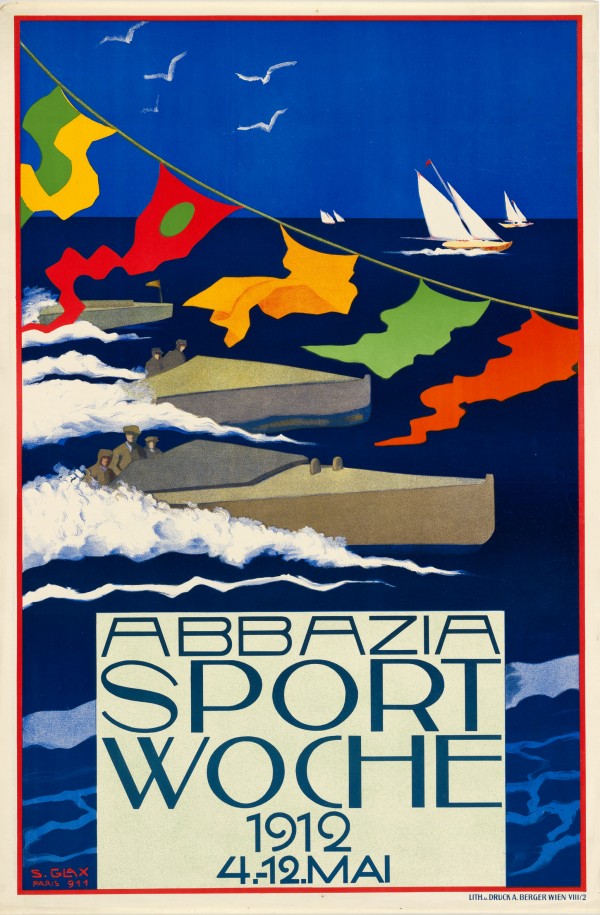
Stephanie Glax, poster, 1912 (Wien Museum)
Glax worked in the area of fine art, but also produced commercial artwork early on during her studies. A series of illustrations, posters and brochures was designed by her to advertise Abbazia as a tourist destination. Her affiche for the “Sportwoche” in 1912 displays an astonishingly modern approach untypical of Austria at the time, and this is evidently intended to be underlined by the signature “S. Glax, Paris”. Even today, this design is repeatedly published as an example of outstanding early poster art.
After World War I Stephanie Glax remained in Abbazia, which then belonged to Italy. In 1919 she married Augusto de Stadler, who was mayor of Abbazia from 1928 to 1936. The family then moved to Venice and on to Milan in 1941, where Stephanie Glax de Stadler died on 29 February 1952.[3]
This text is part of the article: Bernhard Denscher, Women in early graphic design: Three perspectives, in: Denscher, Bernhard (Ed.): Viennese Posters. Art, Artists, Artwork. 1868–1938, Wolkersdorf 2022, p. 49ff.
Translation: Rosemary Bridger-Lippe
[1] See Maryška, Christian: “…und dann wieder das blaue Meer”. Zum Bildinventar der Tourismus-Werbung für die österreichische Riviera. In: Rapp, Christian – Nadia Rapp-Wimberger (eds.): Österreichische Riviera. Wien entdeckt das Meer, Wien 2013, p. 100.
[2] Neue Freie Presse, 5.3.1899, p. 7.
[3] Tavčar, Lidija: Stephanie Glax de Stadler (1876–1952). Slikarka in grafična oblikovalka, Celje 2019, p. 83.
